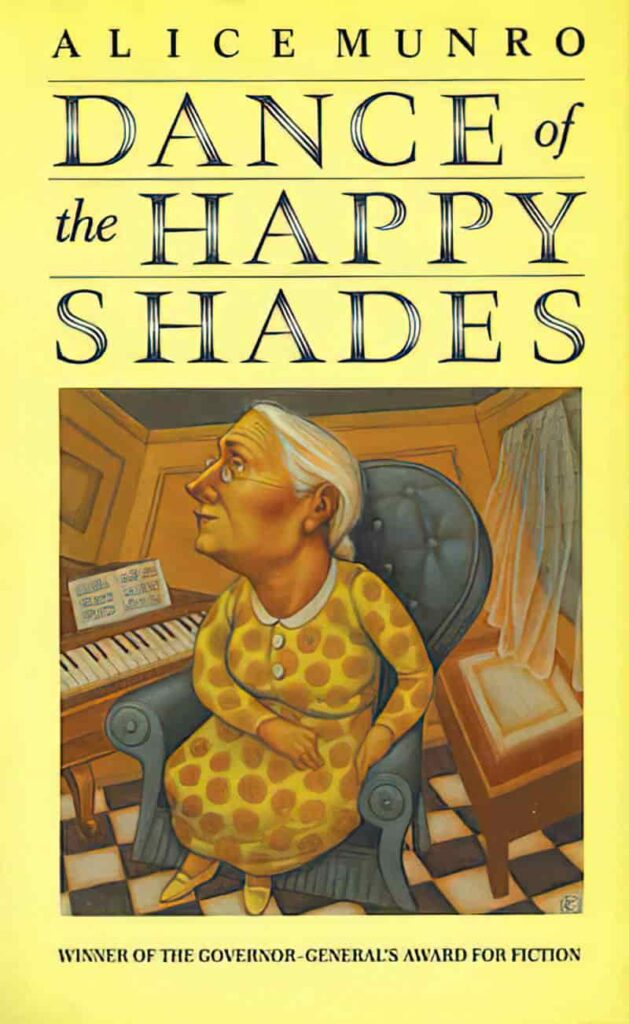
Hearing of Munro’s death sent me back to this, her first book, winner of the Governor General’s Award in 1968. One of my favorite authors, Munro wrote short stories exclusively, forcing her to master the art of compression. Even these early stories demonstrate—to my delight—the kind of concise writing we expect in poetry. Munro is lauded for capturing the life of small towns in rural Ontario, drawing on her experience of growing up in one such town where she was born in 1931. As Hermione Lee writes in the New York Review:
Munro’s “real life” ingredients become enormously familiar to us: the childhood in the fox farm on the edge of town, the mother with incurable Parkinson’s, the studious girl reading her way out of the country into university, the expectations for young women in 1940s and 1950s provincial, conservative, colonial Canada; the early marriage and motherhood in Vancouver, the condescending young husband, the adultery, the divorce, the deaths of her parents, the returns home.
Yet even when I come across some of these familiar details, each story feels new to me and each character a new and different person. She establishes the new character immediately, sometimes by starting in media res, sometimes by giving her an unmistakably original voice.
Afterwards the mother, Leona Parry, lay on the couch, with a quilt around her, and the women kept putting more wood on the fire although the kitchen was very hot, and no one turned the light on . . . “The Time of Death”
Now that Mary McQuade had come, I pretended not to remember her. It seemed the wisest thing to do. She herself said, “if you don’t remember me you don’t remember much.” “Images”
Setting and mood, as well, are deftly established with just a few sentences. Here, the narrator has returned to her hometown for a visit and is sitting on the steps with her sister Maddy in the quiet night.
At 10:30 a bus goes through the town, not slowing much; we see it go by at the end of our street. It is the same bus I used to take when I came home from college, and I remember coming into Jubilee on some warm night, seeing the earth bare around the massive roots of the trees, the drinking fountain surrounded by little puddles of water on the main street, the soft scrolls of blue and red and orange light that said Billiards and Café . . . “The Peace of Utrecht”
This story also illustrates why I value Munro’s work so highly. The tangled relationship between the two sisters, one who stayed to care for their aging mother and one who left, is the fire smoldering between lines laying out the events and memories, the encounters and discords. No story I’d read before this one truly captured the roiling emotions and testy skirmishes between sisters that I’d experienced. Munro is someone who gets me. Was.
Stories, such as “Boys and Girls” where the narrator rejects her mother’s homemaker-in-training chores to join the boys doing far more fun farmwork, speak to me childhood. Others could have been written about my life as a young mother. “The Office” begins:
The solution to my life occurred to me one evening while I was ironing a shirt. It was simple but audacious. I went into the living room where my husband was watching television and I said, “I think I ought to have an office.”
Girls and young women populate the stories in this first collection. I’ve read many of her later stories, which only get better, and now am looking forward to reading her last two books.
Have you read Alice Munro’s work? What is your favorite story?
1 thought on “Dance of the Happy Shades, by Alice Munro”
Comments are closed.